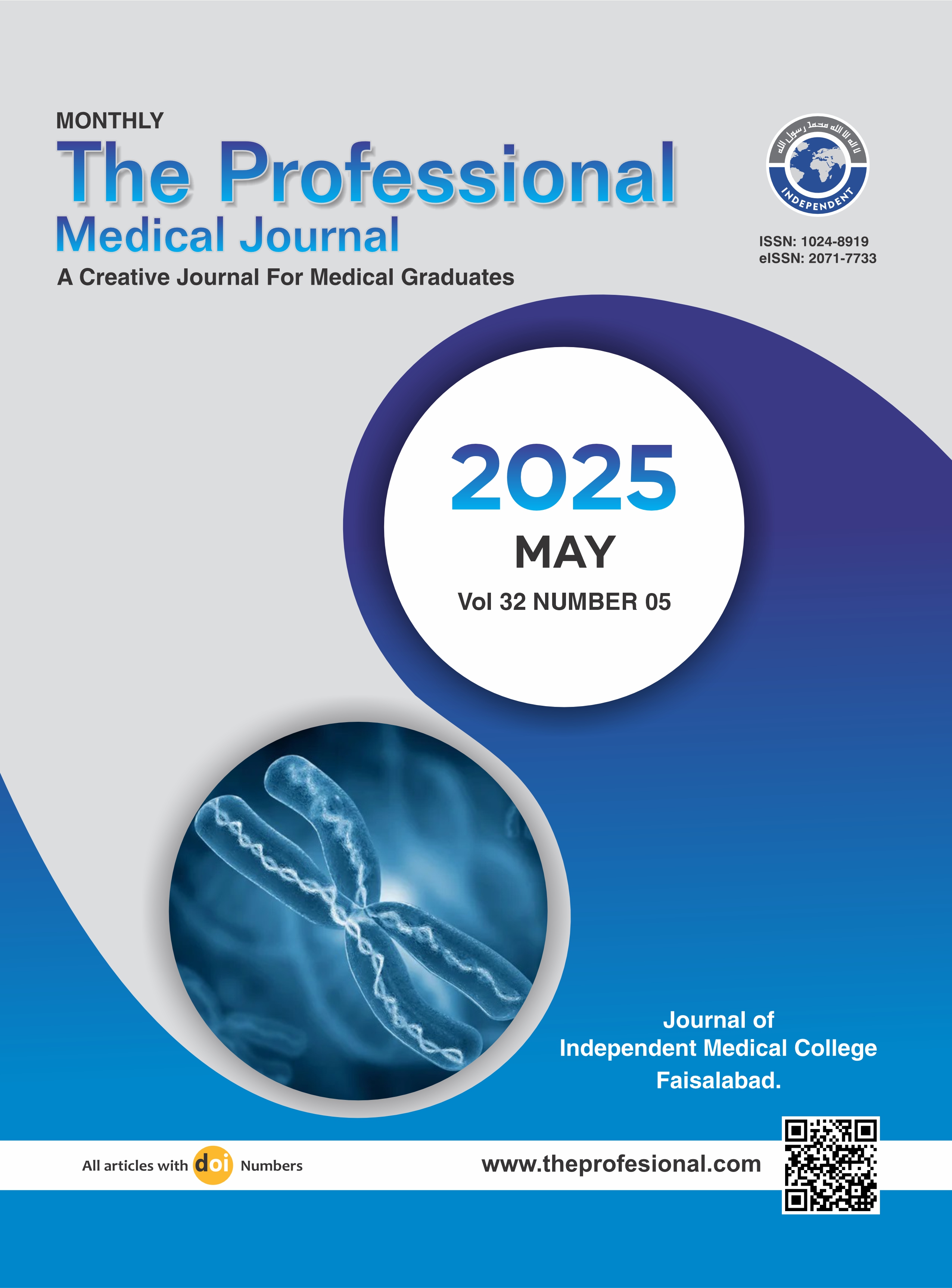APRI (AST to Platelet Ration Index) and (Fibrosis-4 Index) Performance to assess liver fibrosis against predefined fibroscan values in chronic Hepatitis C Virus Infection.
DOI:
https://doi.org/10.29309/TPMJ/2025.32.05.8915Keywords:
APRI, FIB-4, Fibroscan, Hepatitis C, Liver, Platelet, VirusAbstract
Objective: To compare the performance of Fibrosis-4 index (FIB-4), and the AST to platelet ratio index (APRI) versus Fibroscan in chronic hepatitis C virus (CHCV) infection. Study Design: Cross-sectional study. Setting: Department of Gastroenterology, Liaquat National Hospital and Medical College, Karachi, Pakistan. Period: July 2024 to December 2024. Methods: A total of 250 patients aged 20-70 years, and having CHCV were analyzed. APRI and FIB-4 scores were calculated according. The discriminative ability of APRI, and FIB-4 was evaluated drawing area under the curve (AUC) utilizing receiver operating characteristic (ROC) curve. Based on the optimal cut-off value, the sensitivity and specificity of both scoring systems were computed. Results: For a total of 250 patients, the median scores for APRI, FIB-4, and Fibroscan were 0.63 (0.39-1.05), 2.33 (1.13-3.60), and 9 (5.50-23.92), respectively. Fibrosis stages were noted as 98 (39.2%) F0-F1, 18 (7.2%) F2, 30 (12%) F3, and 104 (41.6%) F4. The AUC indicated that the FIB-4 score was a better predictor of chronic severity than the APRI score (AUC=0.994 vs AUC=0.866) among CHCV patients. The optimal cutoff for the FIB-4 score was 2.440 (sensitivity=92.5%, specificity=100%), 1.550 (sensitivity=100%, specificity=91.4%), and 2.565 (sensitivity=85.1%, specificity=100%). Conclusion: In the context of chronic HCV infection, FIB-4 was better than APRI at differentiating between individuals with and without severe fibrosis and cirrhosis.
Downloads
Published
Issue
Section
License
Copyright (c) 2025 The Professional Medical Journal

This work is licensed under a Creative Commons Attribution-NonCommercial 4.0 International License.


